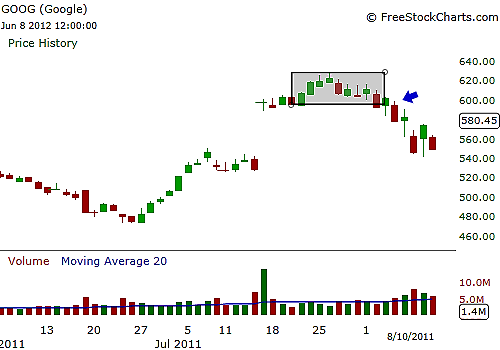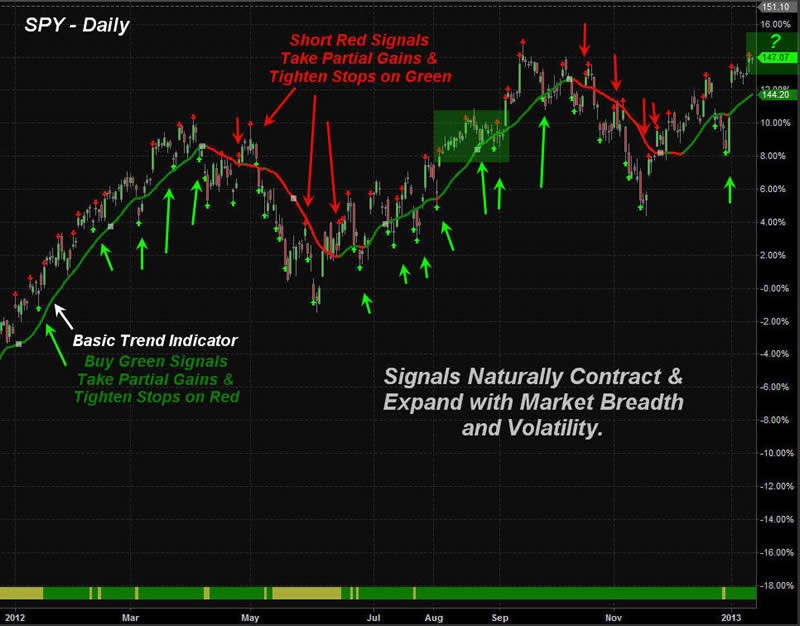Is A Reversal On The Way Consult Traders Index
Post on: 21 Июнь, 2015 No Comment

It’s important to realize that the stock market moves in reaction to the collective psychology of all participants in the market at any given time. These participants include every individual investor who holds stock, but as traders we are more concerned with the major drivers of the markets: active traders. including professionals and institutional traders. But we also need to gauge the sentiment of individual traders or investors making buy and sell decisions on the basis of their analysis of the directions in which the market or particular financial instruments are heading. Here we look at how the traders’ index (TRIN) can help do that.
What Is the Traders’ Index?
We often see the market’s single-mindedness reflected in periods of mania and periods of depression. When we say mania, we are referring to the mass of euphoric emotion exhibited by market participants who, pushing prices up, often act blindly instead of behaving on the basis of rational decision making. Bulls decisively push a manic market into a period of collective greed by buying so many shares that advancing volume increases disproportionately to the number of advancing issues. This is referred to as excessive optimism, and it is the kind of situation that the traders’ index is used to measure. When the TRIN defines a moment of excessive optimism, it acts as a leading indicator. signaling that prices are ready to reverse direction. (Learn more about the collective actions of the market in the Behavioral Finance Tutorial .)
Strictly defined, TRIN measures the ratio of advancing stocks to declining stocks and compares it to the ratio of advancing volume to declining volume. When advancing volume exhibits discordance with the raw number of advancing stocks, the all-important signal is given. Conversely, when volume on the downside increases out of proportion with the number of declining stocks, an upside reversal is said to be imminent.
Interpreting TRIN
While a full and complete understanding of the way TRIN works is probably not relevant, an understanding of how to interpret it most certainly is — its current value is widely reported in most every quote system available. In a neutral market, TRIN will exhibit values within the range of 0.75 to 0.85, and its value typically remains below 1.0, which means the volume of advancing stocks exceeds the volume of declining stocks. This is considered typical because market participants are normally more bullish than bearish. A high TRIN shows that bears are overly optimistic and that the market is nearing a bottom. A low TRIN shows the opposite: the bulls are overoptimistic, the rally is unjustified and a market top is nigh.

But the situation is complicated somewhat because TRIN is handled differently in each of the different market conditions. Both overbought and oversold lines must be plotted at particular levels depending on the nature of the market. For example, in a bull market, an overbought line is placed at 0.65 or 0.70. In a bear market, it is placed at 0.70 or 0.75. The oversold line is placed at around 0.90 or 0.95 in bull markets and at around 1.00 or 1.10 in bear markets. As you can see, the only time a value greater than 1.0 is used is in an oversold condition in a raging bull market.
So the trader who uses TRIN must be careful to identify correctly the market in which stocks currently trade. If he or she has correctly placed his or her overbought and oversold lines, the following buy and sell rules apply:
- Buy when current TRIN crosses above its oversold line. This indicates that bears have wreaked enough havoc on the market, and sentiment is about to change — the market is about to reverse direction and move rapidly to the upside.
- Sell when TRIN sinks below its upper overbought line. While the bulls may still possess one or two last gasps of strength, their power is nearly diminished. Rather than playing the fool’s game of trying to predict an exact market top, do the sensible thing and short the stocks when TRIN falls below its overbought level — a negative reversal is near.
- TRIN is actually most powerful when combined with a reading of NH-NL (new-high new-low index). (For more insight, see 2 Indexes That Help Assess Market Behavior .) The following rules apply: when TRIN becomes oversold and the NH-NL reaches a new low, the downtrend is likely to continue; if TRIN becomes oversold and NH-NL is bullish, then a low has been reached.
- If TRIN shifts to overbought but NH-NL hits a new high, the bulls are strong and the uptrend will continue. When TRIN is overbought and NH-NL returns a bearish signal, the stock market top has likely been reached. Feel free to short away!
- The strength of TRIN is most pronounced when it diverges from prices. When the stock market hits a new high but TRIN hits a lower peak than it did previously, the bulls are diminishing in strength and the uptrend is ending. This is a bearish divergence between TRIN and the stock market — a strong sell signal.
- When the market hits a new low but TRIN reaches a higher low (how’s that for an oxymoron?) than its previous decline, the bears are losing power and the market is ready to reverse into a rally. This bullish divergence between TRIN and the market is a strong buy signal.
Conclusion














